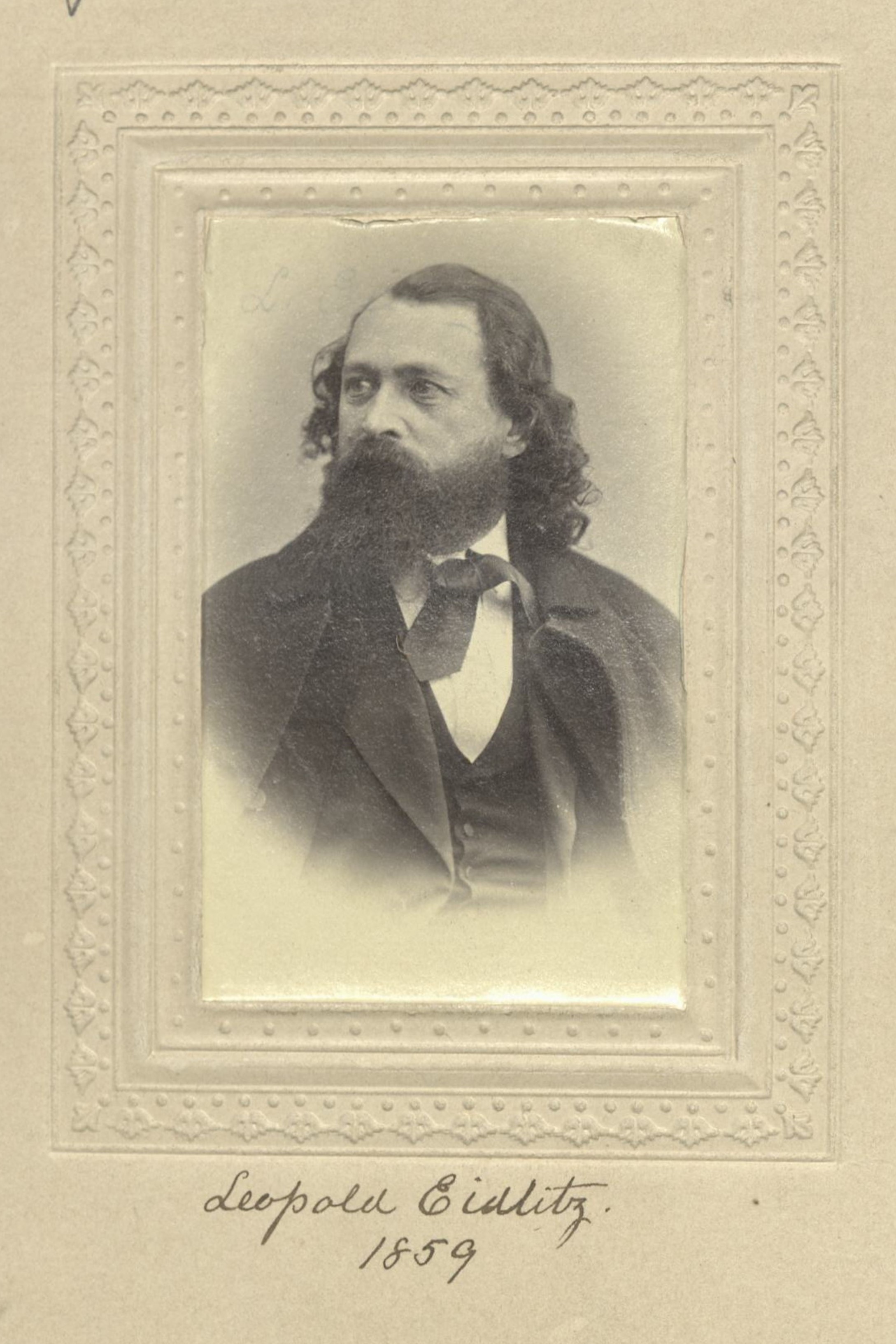Architect
Centurion, 1859–1908
Born 29 March 1823 in Prague, Czech Republic (then Austria-Hungary)
Died 22 March 1908 in New York (Manhattan), New York
Buried Green-Wood Cemetery , Brooklyn, New York
, Brooklyn, New York
Proposed by John Durand
Elected 4 June 1859 at age thirty-six
Archivist’s Note: Father of Cyrus L. W. Eidlitz
Proposer of:
Century Memorial
Leopold Eidlitz was one of the elect in his splendid profession of architecture. He had been a Centurion for fifty years less one when he died, at eighty-five [sic: eighty-four], as rich in honor as he was in age. Born in the capital city of Bohemia, he had the best training afforded in both Prague and Vienna, before he adopted America as a home, literally and entirely—by naturalization, by marriage, and by affection. In the practice of his profession he revealed a new world to the United States, employing only a very few historic styles in his work, but these with an insight and adaptability which was creative. In the perspective of time he is now seen by the keenest critics to have been in the highest rank of his day, with Richardson only as a companion: in the hierarchy of his profession he is an Olympian. The piling of Pelion upon Ossa in this city has erased much of his finest work, and fire has destroyed even more. We miss from the adornment of our city the open-work spires of St. George’s, the old Broadway Tabernacle, the Brooklyn Academy, and other fine creations of his; but the massive grace of the Temple Emanuel is still here, the fine Dry Dock Bank, and other buildings; while he is, humanly speaking, immortal in the work he accomplished for the State Capitol at Albany.
Throughout his long life he displayed a private character of the highest discipline. Strong, patient, gentle, his fireside life was an inspiration to those who knew it. Among us he was genial, sympathetic, and suggestive, a true friend and a stimulating companion. Regular, sensible, moderate, his ways were not those of adventure and the annals of his long career are uneventful; but everywhere, at all times, he was a builder of ideas, of tendencies, of movements; a constructive mind designing and producing monuments for use and for beauty; a man forcing other men to think and to strive, compelling attention, sometimes exasperation, but always serene and kindly in chivalric contest. His one volume, which at the time fretted and irritated the multitude by its discussion of art in its nature and function, revealed him to the chosen few and secured for him deserved recognition as an honorary member of the Royal Institute of British Architects.
William Milligan Sloane
1909 Century Association Yearbook

